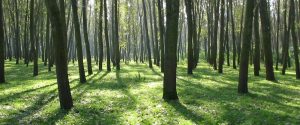6 New Indigenous Territories Officially Recognized in Brazil
Brazil’s President Lula has demarcated six new indigenous territories, covering over 2,300 square miles, to protect the cultural identities and traditional ways of life of these communities. The move grants indigenous peoples exclusive rights to natural resources in these areas and bans all mining, while also increasing regulations on commercial farming and logging. This landmark decision strengthens their role as front-line forest protectors and leaders in Brazil’s bioeconomy.

Please note this article originally appeared in Forest Trends: https://www.forest-trends.org/blog/6-new-indigenous-territories-officially-recognized-in-brazil/
1 May 2023 | Friday was a historic day in Brazil for indigenous peoples and the planet. President Lula demarcated 6 new indigenous territories totaling just over 2,300 square miles (612,000 hectares), with 90 percent of that area in the most remote parts of the Amazon. To give you a picture, this area is equivalent to about half the size of Jamaica or a little larger than the US state of Delaware. The peoples of Arara do Rio Amônia, Kariri-Xocó, Rio dos Índios, Tremembé da Barra do Mundaú, Uneiuxi, and Avá-Canoeiro territories can now begin the process of legal recognition and protection for their lands.
These lands are the foundations of indigenous cultural identities and traditional ways of life, and without the protection provided by land demarcation, these communities are at risk of losing their homes, cultures, and livelihoods. Indigenous peoples have long been the first line of defense against illegal activities, such as logging, mining, and ranching. Lula’s decree grants indigenous peoples exclusive rights to the natural resources in these areas, bans all mining, and increases regulations on commercial farming and logging.
We hope this sends a strong signal to illegal actors that indigenous rights are respected at the highest levels of Brazilian government and will be protected. We also reiterate our commitment to support indigenous peoples in Brazil and beyond in securing their rights and supporting strong governance of their forest homelands.
Legal demarcation doesn’t just help protect indigenous rights; it can help increase the stability territories need to focus on developing their own economies. Indigenous peoples are already poised to become leaders in scaling Brazil’s bioeconomy, where a network of sustainable forest-based enterprises for products like açaí, Brazil nuts, and cacao feed into national and international markets, helping squeeze out economic models that drive deforestation, such as large-scale soy and cattle production.
Official government recognition can also help communities attract and secure direct funding from global climate and conservation finance programs. When guided by Free, Prior, and Informed Consent and other safeguards, such programs can help communities support their own long-term visions for strong, resilient livelihoods and cultural preservation.
This is a unique window of opportunity to keep recognizing the rights of indigenous peoples as Brazilians and develop policies and incentives that center on and acknowledge their role as front-line forest protectors. This is so far reflected in leadership Lula has appointed across agencies: the first ever Ministry of Indigenous Peoples is being led by Sônia Guajajara; Marina Silva as Minister of Environment for the second time (her first term was from 2003-2008); and Garo Batmanian as head of the Brazilian Forest Service. We feel hopeful that these are real signals that the Lula administration will make good on its commitments to indigenous rights and environmental conservation and are already using this momentum to ramp up support to our indigenous partners across Brazil.
For more information:
What Brazil’s new government means for indigenous and local forest-based economies
BBC: Brazil’s Lula recognises six new indigenous reserves
g1 globo: Lula demarca terras indígenas em seis estados; veja detalhes das áreas
Please see our Reprint Guidelines for details on republishing our articles.

